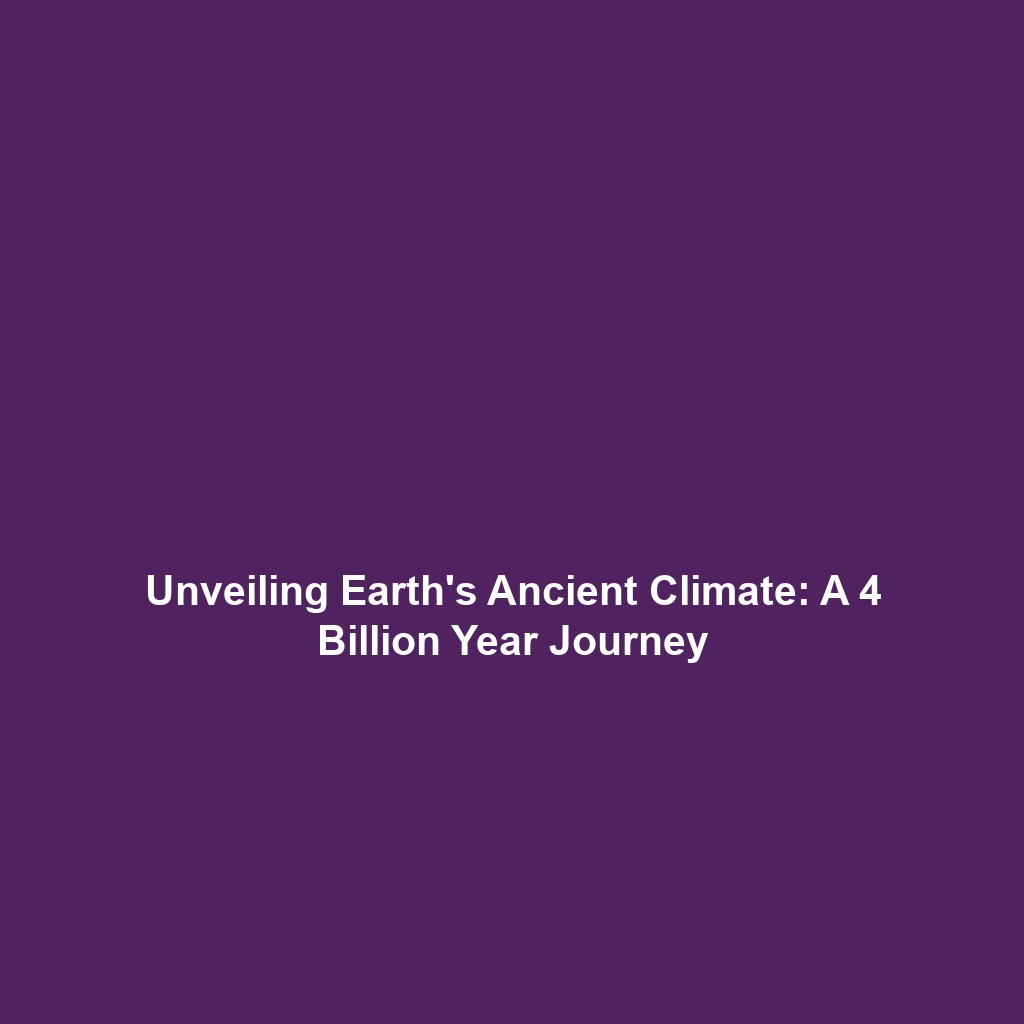Understanding Precambrian Climate: Key Insights in Climate History
Category: Climate History
Topic: Precambrian Climate
Introduction
The Precambrian Climate is a critical aspect of Climate History, encompassing a vast span of time that precedes the emergence of complex life on Earth. This period, which covers approximately 88% of Earth’s history, is significant for understanding the climate dynamics that shaped our planet long before the advent of the Phanerozoic Eon. By examining the climate records from this era, scientists gain crucial insights into the geological and biological processes that influenced early life forms and the planet’s atmosphere.
Key Concepts
1. Geological Time Scale
Precambrian Climate refers to the climatic conditions from Earth’s formation about 4.6 billion years ago until the beginning of the Cambrian Period approximately 541 million years ago. This section of Climate History is marked by several geological events, including the formation of the Earth’s crust, the development of oceans, and significant volcanic activity.
2. Atmospheric Composition
During the Precambrian, the atmosphere underwent profound changes. The early atmosphere was primarily composed of methane, ammonia, and other gases, gradually transitioning to an oxygen-rich environment due to photosynthetic microorganisms. Understanding these shifts is fundamental to deciphering early Earth’s climate behavior.
Applications and Real-World Uses
The applications of understanding Precambrian Climate within the context of Climate History are manifold:
- Geological Exploration: Insights into ancient climates aid in locating mineral deposits and fossil fuels.
- Environmental Restoration: Knowledge of early climate conditions can inform modern climate resilience strategies by providing a baseline for ecological recovery.
- Predictive Models: Understanding historic climate changes empowers scientists to make predictions about future climate scenarios.
Current Challenges
Despite the significance of studying Precambrian Climate, several challenges remain:
- Data Scarcity: Limited geological and fossil records hamper comprehensive climate reconstructions.
- Technological Limitations: Current analytical techniques may not fully capture the complexity of early Earth’s atmosphere.
- Interdisciplinary Approaches: Integrating findings from various scientific fields can be difficult yet is essential for holistic understanding.
Future Research and Innovations
As climate science progresses, research focused on Precambrian Climate is expected to grow, emphasizing the following areas:
- Next-Gen Climate Modeling: Advanced computer simulations may offer deeper insights into ancient climates.
- Genomic Studies: Analyzing the genomes of ancient microorganisms can uncover how life adapted to changing climates.
- Remote Sensing Technologies: Emerging technologies can refine our understanding of geological formations linked to early climate conditions.
Conclusion
In summary, Precambrian Climate provides essential insights into the history of our planet, revealing the dynamics that shaped the conditions for life as we know it. Continued research in this domain will not only enhance our understanding of historical climate patterns but also inform contemporary environmental challenges. For more in-depth exploration, consider reading about the Geological Time Scale or the real-world applications of Climate Science.

